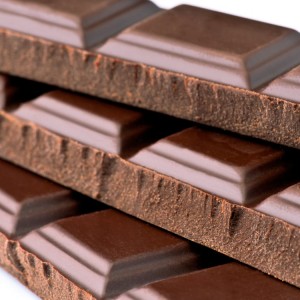
There are quite a few characteristics associated with Trichotillomania. At the core, this condition consists of the repetitive pulling of one’s hair. The scalp is the most common hair pulling site, however other areas include eyelashes, eyebrows, pubic hair, body hair and facial hair. (1) Fingers, tweezers, pins or other mechanical devices have been used by individuals to pluck the hairs. Tension before pulling a hair or when trying to resist pulling is a known characteristic symptom of this condition. (2) People have reported sensations that draw them to hair pulling like itching, tingling, pain; however that may not be the case for everyone.
To make this relatable for those who do not have trichotillomania, please visualize a chocolate bar. A really good melt in your mouth chocolate bar. That feeling you get, that urge to go right now and eat that delicious chocolate bar has actually been compared to the urge of hair pulling in individuals with Trichotillomania. A study done on 208 people with trichotillomania were asked about their hair pulling urges and attempted to compare these urges towards urges for junk food (insert feelings toward that amazing chocolate bar here). Twenty-seven to 59% of individuals said that the urge to pull hair was actually much more severe than the urge to eat junk food. (3) When the hair is plucked feelings of pleasure or relief can even arise. An individual with trichotillomania can share similar characteristics of those of an addict. Some similarities include repetitiveness, lack of control over the behavior, an urge to do it, and experiencing pleasant feelings while doing it. (4)
This condition is often life-long, difficult to treat and usually starts in childhood, around age 4 to 17. (5) Please stay tuned to a follow up blog describing the health consequences of trichotillomania, treatment options and trichotillomania in children.
Article by: Sarah Versteeg MSc, Mediprobe Research Inc.
- Cohen LJ, Stein DJ, Simeon D, Spadaccini E, Rosen J, Aronowitz B, et al. Clinical profile, comorbidity, and treatment history in 123 hair pullers: a survey study. J Clin Psychiatry. 1995 Jul;56(7):319–26.
- American Psychiatric Association. Diagnostic and Statistical Manual of Mental Disorders. 5th Edition. Arlington, VA: American Psychiatric Publishing; 2013.
- Madjar S, Sripada CS. The Phenomenology of Hair Pulling Urges in Trichotillomania: A Comparative Approach. Front Psychol. 2016;7:199.
- Grant JE, Odlaug BL, Potenza MN. Addicted to hair pulling? How an alternate model of trichotillomania may improve treatment outcome. Harv Rev Psychiatry. 2007 Apr;15(2):80–5.
- Keuthen NJ, O’Sullivan RL, Sprich-Buckminster S. Trichotillomania: current issues in conceptualization and treatment. Psychother Psychosom. 1998 Oct;67(4-5):202–13.












